Water for the environment is crucial to sustaining values and conditions in rivers, wetlands and estuaries
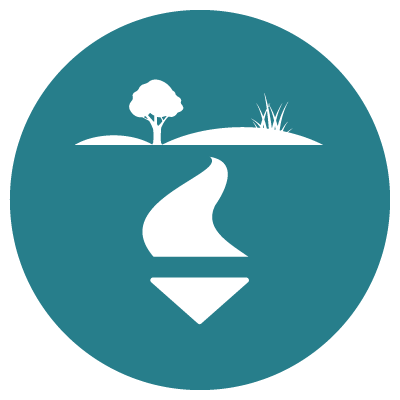
Water for the environment involves managing the flow of water (flow or water regime) to support environmental values. The flow regime includes the timing, frequency, duration and magnitude of the water. The flow regime could include low flows, freshes, high flows, overbank flows and cease to flow (drying) events. Each of these events will have specific roles in sustaining environmental values and conditions, such as prompting fish to breed, wetting vegetation so that it can grow and freshening streams that are stagnant.
Environmental flow studies identify the critical flow needs for a particular river or the wetting and drying patterns of a wetland. They provide recommendations on the timing, duration and amount of water needed to support waterway values.
While the management of the water regime can also provide social value such as managing the risk of algal blooms by providing summer freshes, this condition is focused on measuring the provision of flows to support environmental values.
Values impacted by water for the environment
Macroinvertebrates, fish, frogs, birds, platypus and vegetation
Water for the environment is a critical condition that has strong correlations with all of the waterway values across rivers, wetlands and estuaries. The timing, frequency, duration and magnitude of water is important as it:
- Provides habitat for water-dwelling environmental values, especially in refuge pools in times of drought
- Delivers water into floodplain depressions, billabongs and wetlands, supporting habitat connectivity, fringing vegetation, frogs, fish and birds
- Maintains river form and flushes sediment to improve habitat
- Supports breeding and seasonal queues for environmental values such a fish and birds to migrate and/or breed
Amenity, recreation and community connection
Environmental watering is primarily delivered to achieve outcomes for environmental values. However, delivery of this water can be coordinated to provide a range of shared benefits including managing water quality issues such as algal blooms and improving conditions that can benefit kayaking.
Being able to see and hear running water also adds to the sense of naturalness and amenity along waterways for many. However, the constant presence of water in waterways detracts from the naturalness for those that understand the natural cycle of our regional waterways often involves less water than is commonly found in urban waterways.
Key drivers of the condition of water for the environment
The mechanisms available to provide water for the environment differ for regulated and unregulated rivers.
Regulated refers to rivers where large dams are often constructed to supply water to the city or for irrigation. These dams, though important to people, alter the natural flow regime of the river. Some regulated rivers have an environmental water entitlement to help provide the required flow regimes. This includes the Yarra, Tarago and Werribee rivers.
Unregulated refers to rivers without major dams. Water for irrigation and stock is still harvested in these rivers and the provision of flows for the environment is managed through Stream Flow Management Plans, Local Management Plans or Environmental Water Action Plans.
For wetlands and billabongs, the wetting and drying cycles are both important. They require the right depth, duration, frequency and season of watering to maintain their shape, their vegetation communities and their role as habitat for animals such as birds and frogs. Wetlands in urban growth areas are particularly vulnerable because the increase in urban impervious areas and the construction process itself can alter the natural hydrology and connectivity of wetlands.
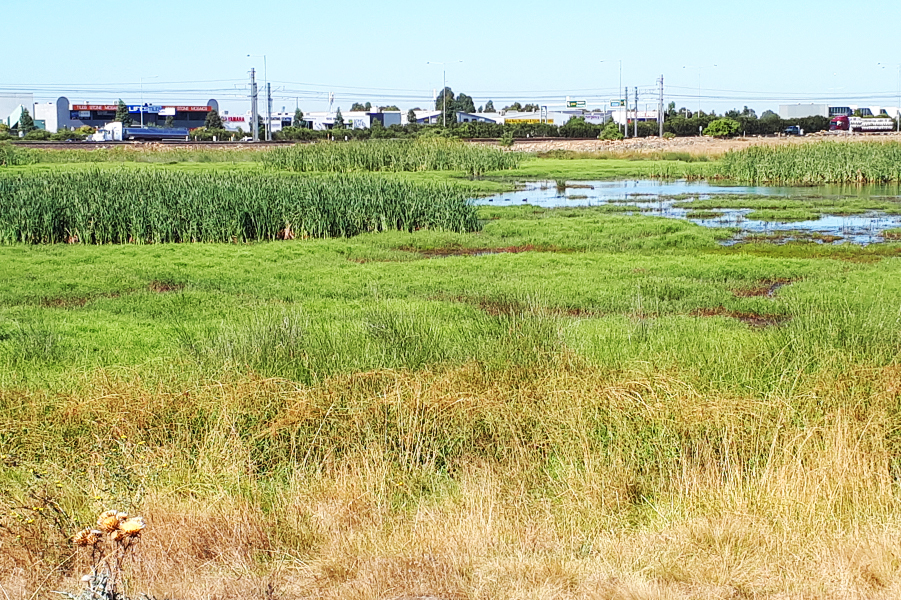
Case study: Protecting our natural wetlands from urban growth
The 2019 Healthy Waterways Strategy Annual Report highlighted natural wetlands as being particularly vulnerable to impacts of urbanisation. Work has begun to highlight the issue more broadly and improve existing planning, policy and regulatory setting to improve protections.
In a drying climate with reduced annual rainfall, less water is available for environmental watering in rivers and wetlands. With significant population growth predicted in the region, more water will be required to service human needs which places increasing pressure on both regulated and unregulated waterways.
Water for the environment is measured using flow
Water for the environment is measured through the interaction of four factors - the depth (extent), duration, frequency and seasonality of inundation against the desired flow regime.
For rivers and estuaries, the process for understanding the flow requirements is quite mature. The condition is assessed by comparing the seasonal flow requirements to the river flow, river level, rainfall, and groundwater levels which can be gathered from gauges and monitoring sites across the region.
Similarly, measuring the condition of the water regime for wetlands considers alterations to the natural water regime, including those that impact source flows, interfere with natural connectivity of flows to the wetland, involve disposal of water into the wetland, extraction of water from the wetland, and changed wetland depth. However, for wetlands the process for accessing the condition of the water regime is still evolving, and the score is based on on-ground data collection at priority wetlands.
Information on the condition of water for the environment over the life of the strategy, including flow data, contextual land use, impervious area information, and an assessment of climate change impacts, will be evaluated at the mid-term and end of the strategy.
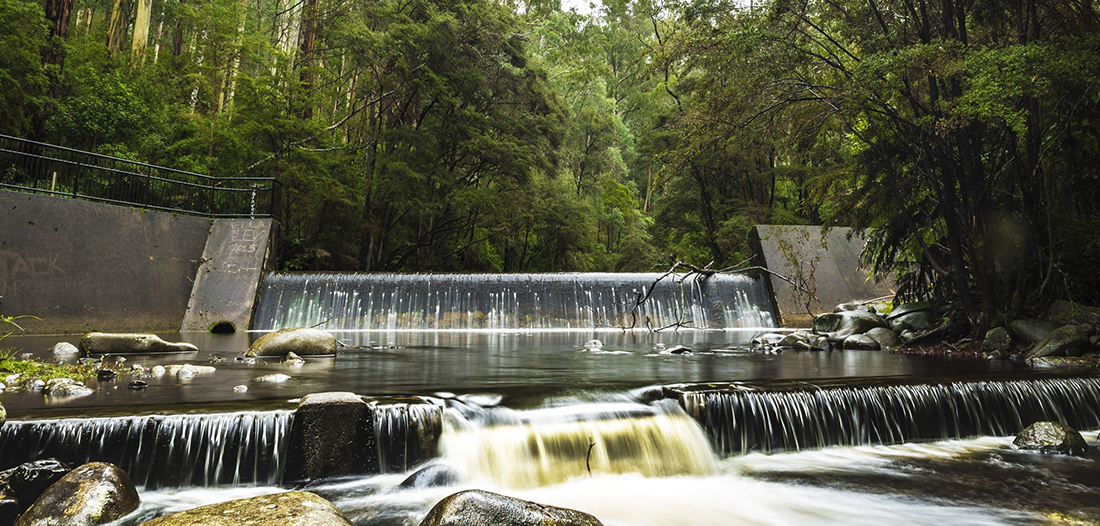
Water for the environment baseline and targets
2018 baseline: The condition of water for the environment in rivers was determined through a combination of the measures above, based on the studies and data available for each sub-catchment. For estuaries and wetlands the assessment of the current rating of the water regime condition is based on the assessment of the alterations to the flow regime.
2068 target: The target for rivers and estuaries addresses a portion of the known shortfall that exists in the region. It aims to increase the environmental water reserve by 23 billion litres per year (23 GL/y) across the region by 2028. Prioritising this earlier in the life of the strategy will maximise environmental benefit for the lowest cost. While this target is less than the lower end of the shortfall estimate, it was seen to be a realistic target by key stakeholders.
The target for wetland water regime is based on the assumptions that over the long term, water regimes for wetlands can be maintained or slightly improved due to the presence of significant species, but will remain low due to climate change and urban development.
Without continued investment in enhancing and maintaining water for the environment in rivers, estuaries and wetlands the condition will decline with climate change and ongoing demand for rural and urban water supply resulting from population growth.
Within the strategy, water for the environment is known in wetlands as water regime and in estuaries as flow regime.
Number of waterways in each catchment by water for the environment score
Hover, click or tap (on mobile) the charts below to view more information.
Baseline and trajectories in Rivers
Actions to improve water for the environment
There are a range of policy and on-ground actions that will enhance water for the environment to protect waterways.
Increase reserve volumes
In regulated systems, there is a need to increase the environmental water reserve in the Yarra, Werribee, Maribyrnong and Tarago systems. Each of these river systems are already flow stressed as current entitlements are insufficient to meet all environmental flow recommendation requirements and will be under further stress with climate change.
Opportunities to secure additional water for the environment will be considered through the review of the Central and Gippsland Sustainable Water Strategy and as an outcome of Integrated Water Management projects.
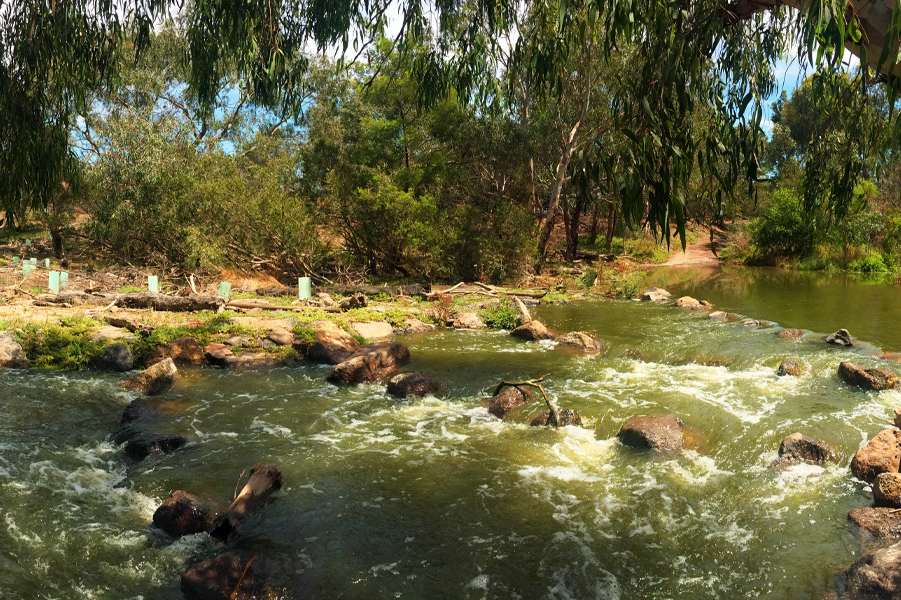
Case study: Environmental water impacts on the Lower Werribee River’s fish populations
Fish in the lower reaches of the Werribee River are benefiting from the delivery of environmental water to help provide cues for migration.
Maintain and improve flow regimes
In unregulated systems, maintaining or improving flow regimes focusses on maintaining critical flow components in refuge reaches to protect environmental values and reducing the threat of flow stress by developing agreed environmental watering objectives.
In the strategy actions such as watering billabongs in the Lower Yarra and placing bans and restrictions to preserve low flows in rivers and streams benefits the environmental and social values. Groundwater monitoring of Groundwater Dependent Ecosystems will help to improve our understanding of these valuable ecosystems over time.
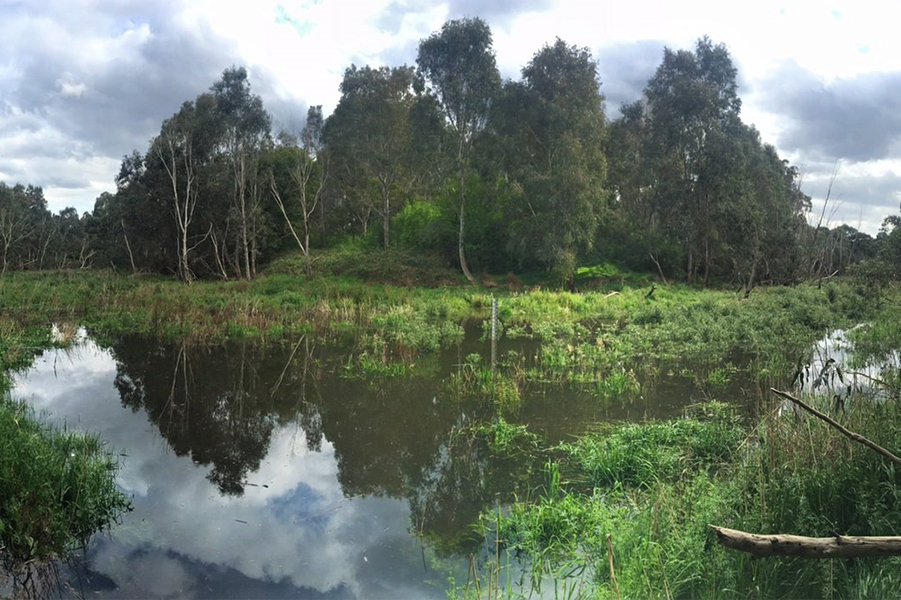
Case study: Improving the management of billabongs in the lower Yarra using three-dimensional imagery
The mapping of billabongs in the lower Yarra using three dimensional imagery will improve how we target actions to achieve the best ecological, social and cultural value outcomes.
Harvest and infiltrate stormwater
The work to harvest and infiltrate stormwater will have a positive impact on the flow regime as it will assist in preserving the natural hydrology and support baseflow conditions. Potentially through Integrated Water Management projects, some harvesting of stormwater may lead to increasing water for the environment.
See the waterway condition - stormwater for more information on the related actions.